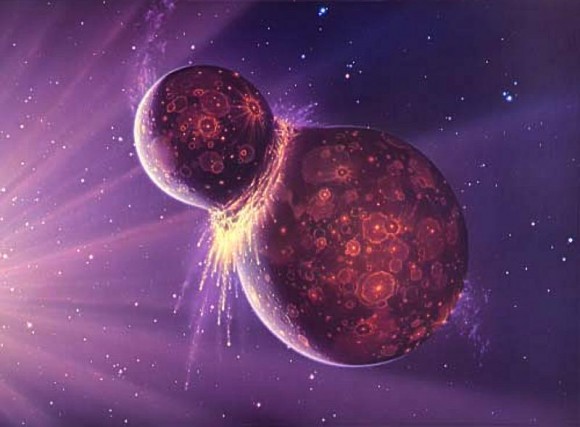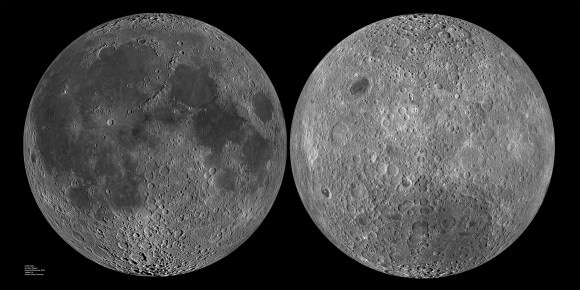The night sky just wouldn’t feel right without the Moon. Where did our our friendly, familiar satellite come from?
Scientists and philosophers have been wondering about this for centuries.
Once Copernicus gave us our current model of the Solar System, with the Earth as just another planet and the Sun at the centre of the Solar System, this gave us a new way of looking at the Moon.
The first modern idea about the formation of the Moon was called the fission theory, and it came from George Darwin, the son of Charles Darwin.
He reasoned the Moon must have broken away from our planet, when the Earth was still a rapidly rotating ball of molten rock.
His theory lasted from the 1800s right up until the space age.
Another idea is that the Earth captured the Moon after its formation.
Usually, these kinds of gravitational interactions don’t go well.
Models predict that either the Moon would collide with the Earth, or get flung out into a different orbit.
It’s possible that the early Earth’s atmosphere was much larger and thicker, and acted like a brake, modifying the Moon’s trajectory into a stable orbit around the Earth.
Or the Earth and Moon formed together in their current positions as a binary object, with Earth taking most of the mass and the Moon forming from the leftovers.

The most widely accepted theory is that the Moon was formed when a Mars-sized object slammed into the Earth, billions of years ago.
This collision turned the newly formed Earth into a molten ball of rock again, and ejected material into orbit.
Most of the material crashed back into the Earth, but some collected together from mutual gravity to form the Moon we have today.
This theory was first conceived in 1946 by Reginald Aldworth Daly from Harvard University. He challenged Darwin’s theory, calculating that just a piece of Earth breaking off couldn’t actually allow the Moon to get to its current position. He suggested an impact could do the trick though.
This idea wasn’t given much thought until a 1974 paper by Dr. William K. Hartmann and Dr. Donald R. Davis was published in the Journal Icarus. They suggested that the early Solar System was still filled with leftover moon-sized objects which were colliding with the planets.
The impact theory explained many of the challenges about the formation of the Moon. For example, one question was: why do the Earth and Moon have very different-sized cores.
After an impact from a Mars-sized planet, the lighter outer layers of the Earth would have been ejected into orbit and coalesced into the Moon, while the denser elements collected back together into the Earth.
It also helps explain how the Moon is on an inclined plane to the Earth. If the Earth and Moon formed together, they’d be perfectly lined up with the Sun.
But an impactor could come from any direction and carve out a moon. One surprising idea is that the impact actually created two moons for the Earth.

The second, smaller object would have been unstable and eventually slammed into the far side of the Moon, explaining why the surface on the far side of the Moon is so different from the near side.
Even though we don’t know for sure how the Moon formed, the giant impact theory holds the most promise, and you can bet that scientists are continuing to look for clues to tell us more.


The latest iteration I know of is that better computer modeling has opened up the parameter space, and varied models align better with the various similarities that exist between Earth and Moon.
The most exciting scenario IMO is that Tellus, the geohistorically proposed name for the preimpact protoplanet that mostly made up Earth, and Theia, the astronomically proposed name for the preimpact protoplanet that mostly made up Moon, was roughly equally massed but impacted at low velocities and rotation.
That would make direct comparison to Pluto-Charon, which is the most analogous system today and is also believed to have been the result of a low velocity impact event, and to Vesta, which first impact in the large Rheasilvia is believed to have been a low rotation impact.
Similar massed Tellus and Theia protoplanets is also apriori most likely as contemporary results of accretion.
Finally, the low velocity impact reminds of the constraints of the old hypothesis of Theia as an orbital resonance parked impactor that was disturbed and later hit Tellus. I dunno if that scenario works with equal massed protoplanets though.